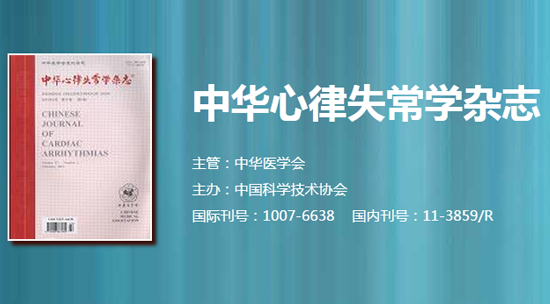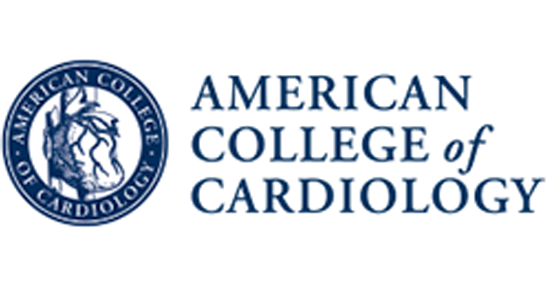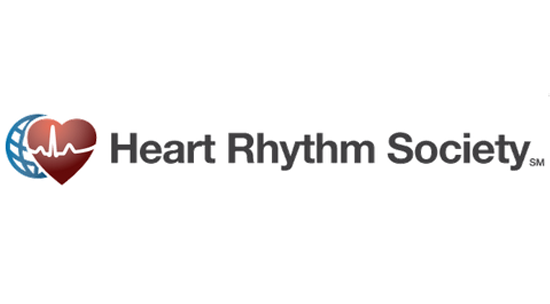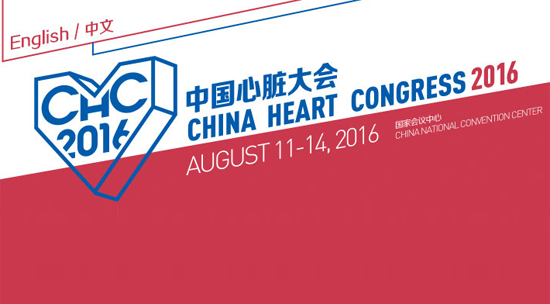Heart Rhythm主编—陈鹏生教授语音速递(十二月刊 英文版)
<< First issue in Dec 2018 >>
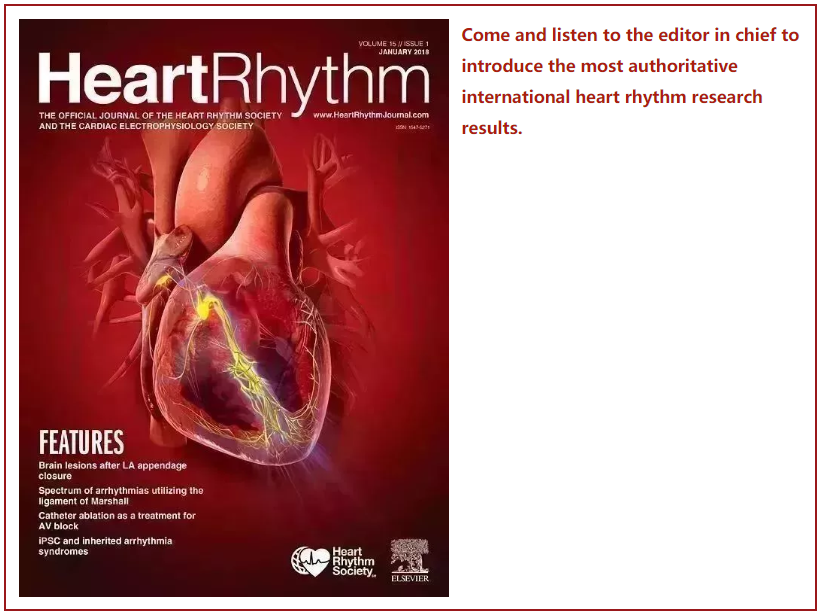
1
The featured article this month is titled “Electrical isolation of the left atrial appendage increases the risk of ischemic stroke and transient ischemic attack regardless of postisolation flow velocity” by Kim et al., from Korea University, Seoul, Republic of Korea. An accompanying video author interview conducted by our online editor, Dr. Daniel Morin, can be found at the www.heartrhythmjournal.com website. The study included 2352 consecutive patients undergoing AF ablation. Among them, 39 had LAA isolation. They found that patients with LAA isolation had a significantly higher rate of ischemic stroke or TIA than did those without LAA isolation. The LAA flow velocity of post-LAA isolation status was not significantly different between patients who did and did not experience ischemic stroke or TIA. The authors conclude that a significantly increased risk of ischemic stroke or TIA was observed in patients with electrical isolation of the LAA. In this study, anticoagulation was discontinued, at the operator’s discretion, if no AF was documented on regular Holter monitoring. Whether or not the absence of continued anticoagulation during follow up contributed to the results of the study is unclear.
2
This issue is a focus issue on devices. The first article is titled “Predicted longevity of contemporary cardiac implantable electronic devices: A call for industry-wide “standardized” reporting”. The paper was written by Munawar et al., from the University of Adelaide, Australia. The authors extracted data for current model pacemakers, ICDs, and CRT-defibrillators from product manuals. The longevity estimations were based on standardized programming parameters. The results show that maximum predicted longevity of single- and dual-chamber pacemakers was 12.0 and 9.8 years, respectively. Use of advanced features can reduce expected longevity by about 1.4 years. Maximum predicted longevity of ICDs and CRT-Ds was 12.4 and 8.8 years, respectively. Of note, there was greater than 40% variation in predicted CIED longevity according to device manufacturers. The authors conclude that contemporary CIEDs demonstrate highly variable predicted longevity according to device manufacturers. This may impact on health care costs and long-term clinical outcomes. Therefore, the authors call for an industry-wide “standardized” reporting of CIED longevity.
3
Next up is a paper titled “Long-term reverse remodeling by cardiac resynchronization therapy with MultiPoint Pacing: A feasibility study of noninvasive hemodynamics–guided device programming”. This paper was written by Lercher et al., Medical University Graz, Austria. The authors studied 42 patients enrolled in 4 European centers. Relative to atrial-only pacing, the best BiV and best MultiPoint Pacing configurations produced significant systolic BP elevations of 3.1 mmHg for BiV and 4.1 mmHg for MultiPoint Pacing. Greater systolic BP elevations were associated with the best MultiPoint Pacing compared with the best BiV configurations in 78% of patients. Of MultiPoint Pacing-programmed patients completing the 6-month follow-up visit, 85% were classified as CRT responders. The authors conclude that acute noninvasive hemodynamics after CRT device implantation predominantly favored MultiPoint Pacing over BiV programming. MultiPoint Pacing programming guided by noninvasive hemodynamics resulted in positive LV structural remodeling. These results suggest that routine acute noninvasive hemodynamic optimization based on systolic BP assessment will help us individualize the best pacing modalities in CRT.
4
Zheng et al. from Brigham and Women's Hospital in Boston wrote the next article, titled “Transvenous lead extraction during uninterrupted warfarin therapy: Feasibility and outcomes.” The authors performed a retrospective study of 1212 patients undergoing transvenous lead extraction while receiving uninterrupted warfarin therapy. Of these patients, 62 underwent transvenous lead extraction during uninterrupted warfarin therapy with therapeutic INR. There was a 98.4% procedural and clinical success rate. Two patients had procedure-related complications: 1 small pericardial effusion that resolved spontaneously, and 1 femoral vein tear requiring vascular repair. The authors conclude that transvenous lead extraction during uninterrupted warfarin therapy with therapeutic INR may be considered in patients at high risk for thromboembolism. This study provided evidence showing that therapeutic anticoagulation does not necessarily lead to a prohibitive bleeding risk in transvenous lead extraction. This study is limited by the retrospective nature of the study design. A prospective randomized study may be needed to compare the risk-benefit ratio of this approach.
5
The next paper is “Repolarization heterogeneity in patients with cardiac resynchronization therapy and its relation to ventricular tachyarrhythmias” by Cvijić et al., from University Medical Centre Ljubljana, Slovenia. The authors prospectively included 64 patients with heart failure treated with CRT. The QT interval, TpTe, and TpTe/QT ratio were analyzed to determine repolarization heterogeneity. They found a significant increase of repolarization heterogeneity in the first months following CRT, followed by decline during 12 months of follow-up. Patients with VT/VF during long-term follow-up had higher repolarization heterogeneity at mid-term follow-up than patients without VT/VF. In multivariate Cox regression analysis, only high repolarization heterogeneity at mid-term follow-up (that is, TpTe/QT ratio >0.260) was independently associated with high risk of VT/VF. The authors conclude that CRT induces time-dependent changes in repolarization parameters in the first year after implantation. High repolarization heterogeneity at mid-term follow-up was associated with higher rate of VT/VF during long-term follow-up. These findings also suggest that electrophysiological remodeling plays a role in determining long-term arrhythmia outcomes after CRT.
6
Next up is a review article by Roston et al. from the University of British Columbia, Vancouver, Canada. The paper is titled “Implantable cardioverter-defibrillator use in catecholaminergic polymorphic ventricular tachycardia: A systematic review”. The authors found 53 studies describing 1429 patients with CPVT. Among them, 35.2% of patients had an ICD. Almost all were treated with β-blockers and 13.2% with flecainide. Sympathetic denervation was performed in 23.2%. Nearly half of patients received an ICD for primary prevention and 12.8% were prescribed optimal antiarrhythmic therapy. During follow-up, there were high rates of appropriate and inappropriate shocks, and 7 patients died. An ICD-associated electrical storm was implicated in 4 deaths. Additional complications such as lead failure, endocarditis, or surgical revisions were observed in 32.4%. The authors conclude that ICDs were common in patients with CPVT and are associated with a high burden of shocks and complications. The reliance on primary prevention ICDs, and poor uptake of adjuvant antiarrhythmic therapies, suggests that improved adherence to guideline-directed management could reduce ICD use and ICD-related harm in this group of patients. In other words, this group of patients may benefit from better antiarrhythmic treatment because of the high rates of shocks and electrical storm associated with ICDs.
7
Next up is “Updated performance of the Micra transcatheter pacemaker in the real-world setting: A comparison to the investigational study and a transvenous historical control.” The paper was written by El-Chami et al. from Emory University, Atlanta. The authors report that the Micra device was successfully implanted in 1801 patients. The major complication rate was 2.7% in the first year. The risk of major complications was 63% lower than that for patients with transvenous pacemakers. The major complication rate trended lower in the Micra Post-Approval Registry than in the Investigational Device Exemption (IDE) study, driven by the lower pericardial effusion rate. The authors conclude that the performance of the Micra transcatheter pacemaker in international clinical practice remains consistent with previously reported data. Major complications were infrequent and occurred 63% less often compared to transvenous systems. A limitation of the study is that the patients were not randomly assigned to different groups.
8
Moore et al. from UCLA wrote the following article, titled “Implantation techniques and outcomes after cardiac resynchronization therapy for congenitally corrected transposition of the great arteries.” The authors retrospectively identified 20 patients with CRT. The indication for CRT was pacing-induced ventricular dysfunction in 60%, AV block in 25%, and CHF and QRS prolongation in 15%. A transvenous approach was successful in 95% in whom it was attempted, with cannulation of a posteroseptal ostium in 78% percent, the vein of Marshall in 11%, and a superior ectopic ostium in 11%. The authors conclude that a transvenous approach to CRT involving distinct coronary venous patterns is feasible for most patients with congenitally corrected transposition of the great arteries. Long-term outcome is favorable, but is characterized by return of right ventricular dysfunction in some patients. Because an increasing number of congenital heart disease patients are surviving to adulthood, more of these patients will require CRT implantation. This study provided useful guidance to the approach.
9
The next paper is by van der Bijl et al., titled “Impact of atrial fibrillation on improvement of functional mitral regurgitation in cardiac resynchronization therapy”. The authors studied a total of 419 patients. At 6-month follow-up, functional mitral regurgitation improved after CRT in 45.6% with sinus rhythm vs. 30% of AF patients. Despite similar LV reverse remodeling at 6 months after CRT, patients with sinus rhythm exhibited smaller LA volumes and mitral annular diameters compared to AF patients. The authors conclude that functional mitral regurgitation improvement is more common in CRT recipients in sinus rhythm versus AF, despite a similar degree of LV remodeling. A limitation is the retrospective study design. Whether or not rhythm control of AF will improve response to CRT in these patients remains unknown.
10
Next up is “Rate control and clinical outcomes in patients with atrial fibrillation and obstructive lung disease” by You et al. from Ajou University School of Medicine, Korea. This study used the entire database provided by the National Health Insurance Service from 2002 to 2015. Approximately13,000 patients were included. The risk of mortality was lower with the use of selective and non-selective beta blockers as compared to use of calcium channel blockers. Digoxin use correlated with worse survival. The authors conclude that among patients with AF and obstructive lung diseases, rate-control treatment using beta blockers was associated with a significant reduction in mortality compared with calcium channel blockers. The present study adds to the growing body of literature suggesting that the presence of obstructive lung disease should not dissuade clinicians from using BBs. It may be their best option for rate control. These findings will need confirmation by prospective randomized trials.
11
Yokokawa et al. from the University of Michigan wrote the next article, titled “Cryoballoon antral pulmonary vein isolation vs. force-sensing radiofrequency catheter ablation for pulmonary vein and posterior left atrial isolation in patients with persistent atrial fibrillation.” Antral pulmonary vein isolation was performed in 167 consecutive patients with persistent AF. Among them, cryoballoon ablation was used in 90 while contact force-RF catheter ablation was used in 77. During 21 months of follow-up after a single ablation procedure, 41% in the cryo group and 51% in the contact force-RFA group remained in sinus rhythm without antiarrhythmic drugs. After repeat ablation, sinus rhythm was maintained in 61% and 68% in the cryo and contact force RFA groups, respectively. The authors conclude that in persistent AF, an initial approach of these two ablation techniques has a similar efficacy of 40%–50% without antiarrhythmic drugs. After repeat ablation, sinus rhythm is maintained in 60%–70% of patients without antiarrhythmic drugs. It appears that these two techniques have similar efficacies in ablating persistent AF. A limitation is that this study did not randomly assign patients to different arms of therapy.
12
Next up is a paper by Heeger et al. from University Heart Center, in Luebeck, Germany. The paper is titled “What is the real recurrence rate after cryoballoon-based pulmonary vein isolation? Lessons from rhythm follow-up based on implanted cardiac devices with continuous atrial monitoring”. The authors studied 670 consecutive patients with second-generation cryoballoon PV isolation. In 66 patients, an implantable cardiac device with continuous monitor function was independently implanted before the procedure. There was 98.4% success in PV isolation in the device group. At 1-year follow up, the clinical success in terms of freedom from AF recurrence was 64% in the device group, significantly lower than 77% in the control group. In the subset of patients who were monitored with the implanted device, AF/AT burden decreased from 40 to 10%. The authors conclude that second-generation cryoballoon PV isolation seems safe and feasible in patients with an implanted cardiac device. A significantly higher AF/AT burden was seen in patients with an implanted cardiac device compared to a control group. These results suggest that patients with implantable devices may benefit from improved detection of AF recurrences as compared with intermittent outpatient ECGs and symptom based follow up visits. However, whether or not increased detection of AF recurrences translates into improved mortality and reduced morbidity remains unknown.
13
Takigawa et al. from Tokyo Medical and Dental University, Japan, wrote the following article titled “Importance of bipolar electrode orientation on local electrogram properties.” The authors used a HD-32 Grid catheter in 7 sheep with anterior myocardial infarction. A total of 4000 electrograms were analyzed for 2000 sites. The voltage variation was maximized at sites where the activation wavefront was perpendicular to the one bipolar direction and parallel to the other. Local ventricular abnormal activities (LAVAs) were detected in 29% of sites in total, and were frequently distributed in the MRI-defined border area. The authors found that 30% of LAVAs were missed in one direction or the other. When the LAVAs detected in the “northeast” direction were used as the reference, only 57% matched with those detected in the “southeast” direction. The authors conclude that the bipolar voltage and distribution of LAVAs may differ significantly between diagonally orthogonal bipolar pairs at any given site. Because LAVA detection may be important for substrate-based VT ablation, the information provided in this paper may lead to better identification of LAVA and facilitate VT ablation. This study is limited by the absence of VT in this animal model.
14
Coming up is an article titled “Early experience with intravenous sotalol in children with and without congenital heart disease”. Valdés et al. from Texas Children's Hospital performed a retrospective study of 47 pediatric patients receiving IV sotalol. The median age was 2 years, with a median weight of 13 kg. Supraventricular arrhythmias occurred in 85% and ventricular tachycardia in 15% of the patients. Among 24 patients receiving IV sotalol for an active arrhythmia, acute termination was achieved in 21 (88%). Twenty-three patients received IV sotalol as maintenance therapy for recurrent arrhythmias owing to inability to take oral antiarrhythmic medications; 19 of these, or 83%, were controlled with sotalol monotherapy. No patient required discontinuation of IV sotalol due to adverse effects, proarrhythmia, or QT prolongation. This study shows that IV sotalol is an effective antiarrhythmic option for pediatric patients and may be an excellent agent for acute termination of active arrhythmias. Sotalol was well tolerated, with no patient requiring discontinuation secondary to adverse effects. While oral sotalol has been commonly used for arrhythmia control, few sets of data are available to support IV sotalol use in pediatric patients. While the study is limited by the retrospective nature of the study design, it has provided useful information for patient care.
15
Kostrzewa et al. from Heidelberg University, Germany, wrote the following article titled “Cardiac impact of R-wave triggered irreversible electroporation therapy.” Irreversible electroporation is a novel tumor ablative therapy technique, using electric fields to induce apoptosis in target tissues. The authors performed a study in 26 patients with diagnoses of liver, lung, kidney and other common malignant tumors who underwent ECG-gated irreversible electroporation. Depending on lesion size, 2–5 needles were introduced around and, if necessary, into the lesion using sequential CT guidance. The shortest distance between the ablation zone to the pericardium was 6 mm. The mean energy delivered was over 3000 joules. After the procedure, 9 patients (34.6%) showed an increase in high-sensitivity troponin I, and 21 patients had an increase in NT-proBNP after ablation. Fifteen patients developed arrhythmias related to the procedure. One patient developed multiple, nonsustained VT and one developed AF. An additional 12 patients had clinically benign arrhythmias. The authors conclude that subclinical myocardial injury and nonfatal cardiac arrhythmias can occur in irreversible electroporation treatment. As noted in an accompanying editorial by Aras and Efimov, reversible electroporation is extensively documented after electrical defibrillation and may play a role in generating postshock cardiac arrhythmias. The results of the present study suggest that irreversible electroporation should be used with caution.
16
Next up is a paper titled “Accelerated conversion of atrial fibrillation to normal sinus rhythm by pulmonary delivery of flecainide acetate in a porcine model” by Verrier et al. from Beth Israel Deaconess Medical Center, in Boston. In 11 closed-chest anesthetized Yorkshire pigs, AF was induced by intrapericardial administration of acetylcholine followed by burst pacing and allowed to continue for 2 minutes before intratracheal flecainide administration. The authors found that intratracheal flecainide significantly reduced AF duration compared to the drug-free baseline. There was a strong inverse correlation between the duration of AF and the change in atrial depolarization duration in response to intratracheal flecainide. The authors conclude that intratracheal flecainide instillation is effective in rapidly converting AF to normal sinus rhythm and restoring mean arterial pressure and heart rate to baseline values. The basis for this efficacy is likely rapid absorption of the drug through the lungs and delivery as a first-pass bolus to the left atrial and ventricular chambers and then to the coronary arterial circulation. A potential clinical translation would be to develop inhalation antiarrhythmic therapy for acute termination of AF.
17
In addition to the original articles I’ve discussed, this issue of the journal also publishes an Unknown of the Month article on “Termination of a narrow complex tachycardia by a single extrastimulus - What is the mechanism?”, a Josephson and Wellens ECG titled “Two different P waves after a single ventricular premature beat in a 33 year old man,” 4 EP News articles, and a letter to the editor.
